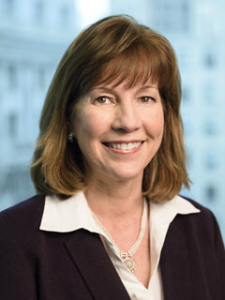![Christi_Pedra[1] Christi_Pedra[1]](https://theglasshammer.com/wp-content/uploads/2009/09/Christi_Pedra1-171x240.jpg) The concept of the “corporate ladder” is such a common analogy that many in the business world only see their careers in terms of the rungs they haven’t been able to reach. According to Christi Pedra, CEO of Siemens Hearing Instruments, that kind of thinking may be a mistake. Pedra prefers to think of the ladder as a rock climb where there are more directions in a career path than strictly moving up.
The concept of the “corporate ladder” is such a common analogy that many in the business world only see their careers in terms of the rungs they haven’t been able to reach. According to Christi Pedra, CEO of Siemens Hearing Instruments, that kind of thinking may be a mistake. Pedra prefers to think of the ladder as a rock climb where there are more directions in a career path than strictly moving up.
“My [25 years] at Siemens hasn’t always been a vertical rise to the top,” she said. “I’ve taken many lateral moves and they’ve provided me with some excellent, much-needed experience. You’ve got your feet firmly planted, but sometimes you need to move to the left or right before you can make it to the top.”
Pedra has a knack for seeing opportunities others might miss if they only look upward. After graduating from a state college, she started her climb with non-profits such as the Cystic Fibrosis Foundation and the March of Dimes and spent a great deal of time managing community outreach.
In 1980, Pedra entered the business world via the telecommunications industry, first with Nortel, then with ROLM. While working on an MBA from Rutgers University, she continued her career climb, this time at Siemens. There, she volunteered for projects offering significant growth potential, but these also required her to venture into unfamiliar territory.
“You can’t be afraid to go out on a limb,” Pedra said. “That’s where the fruit is.”
Read more

 by Pamela Weinsaft (New York City)
by Pamela Weinsaft (New York City) by Pamela Weinsaft (New York City)
by Pamela Weinsaft (New York City) When Ann Margaret Pointer was in grade school, a woman became a Justice of the Supreme Court for the State of North Carolina, and that had a profound impact on Pointer’s life. ”My parents knew and respected [
When Ann Margaret Pointer was in grade school, a woman became a Justice of the Supreme Court for the State of North Carolina, and that had a profound impact on Pointer’s life. ”My parents knew and respected [ by Elizabeth Harrin (London)
by Elizabeth Harrin (London) By Tina Vasquez (Los Angeles)
By Tina Vasquez (Los Angeles)

 By Tina Vasquez (Los Angeles)
By Tina Vasquez (Los Angeles)